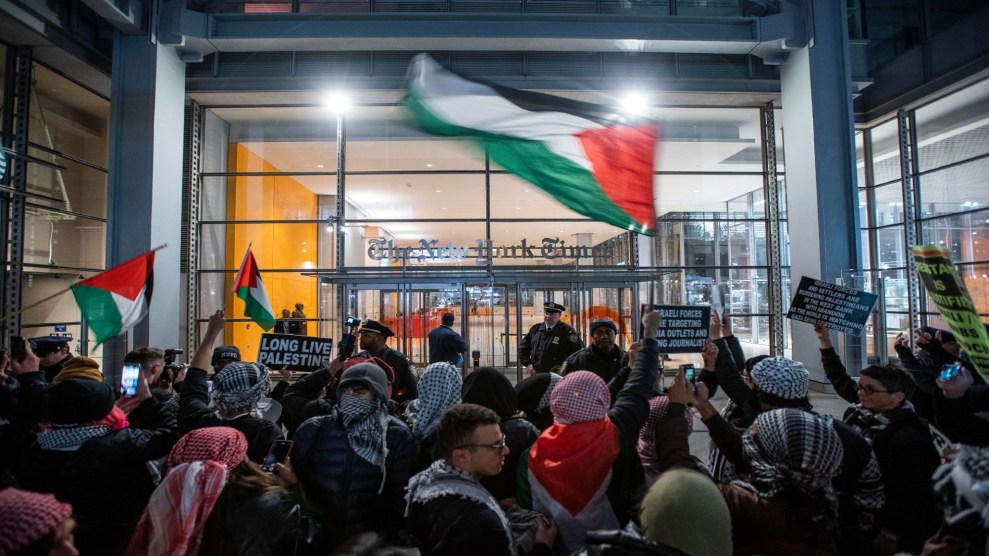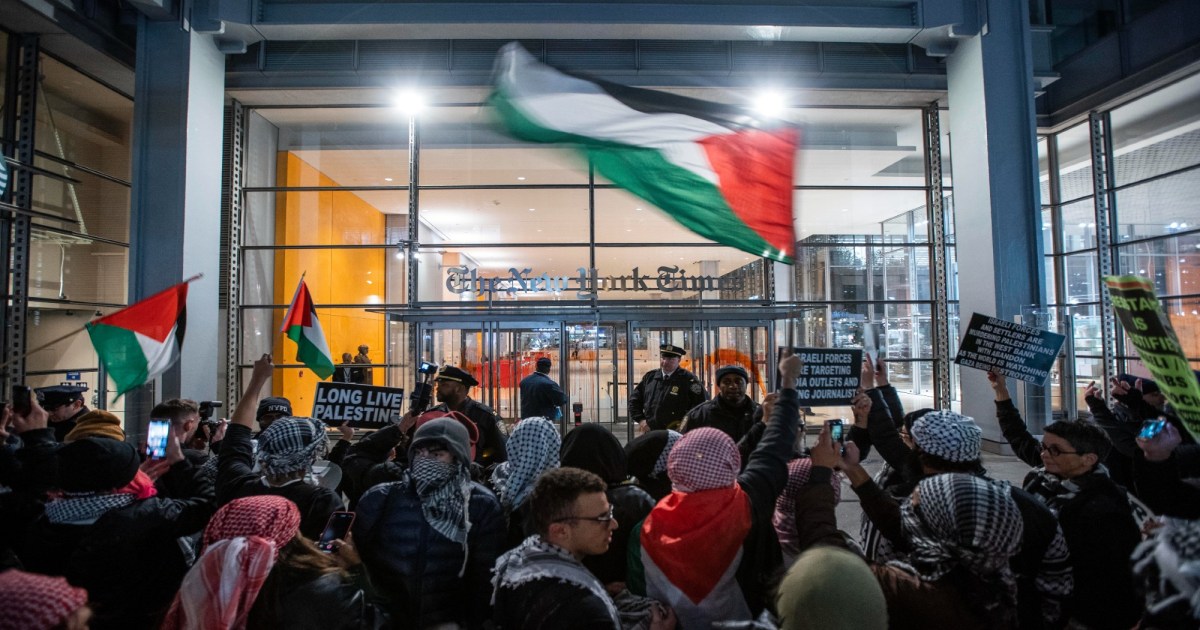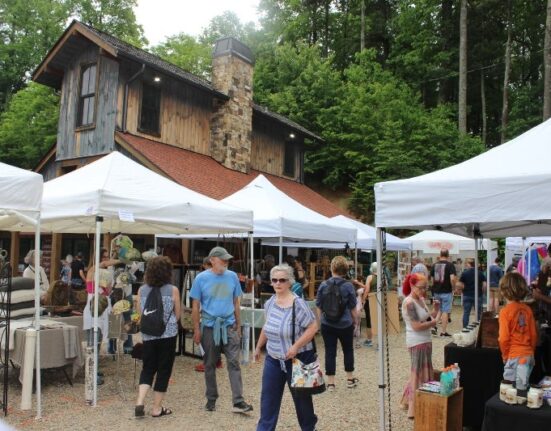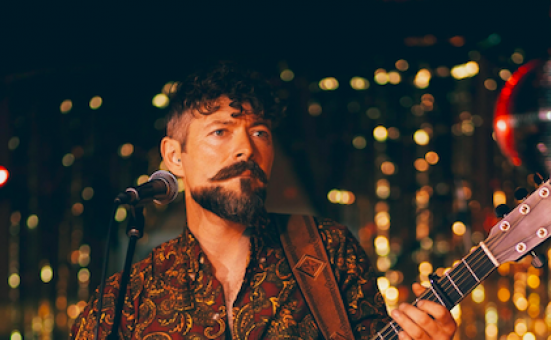
Eduardo Munoz Alvarez/AP
In the spring of 1966, as college students protesting the Vietnam War organized teach-ins to educate their peers on the war, the poet Robert Bly knew they needed backup. “If you went to an audience [at that time],” he told an interviewer in 1970, “I’d say 90 percent would be in favor of the war and 10 percent would be against it.”
To support their efforts, he organized a “read-in” with the poet David Ray at Reed College in Portland, Oregon. The event, which brought poets, veterans, and students together to read and recite anti-war poetry, was so successful they decided to go further, eventually organizing hundreds of rallies, teach-ins, and demonstrations for writers invested in ending the war. Under Bly and Ray’s leadership, this group became American Writers Against the Vietnam War.
Their members and allies included 20th century literary icons like Adrienne Rich, Allen Ginsberg, Grace Paley and they used their platforms (In Bly’s case his $1,000 prize money from winning the 1968 National Book Award) to bail draft resistors out of jail and generate support for the anti-war movement. Their work contributed to the groundswell of opposition that eroded support for the Vietnam War and remains an enduring example of the unique role artists can play during wartime.
Ari Brostoff, a senior editor at Jewish Currents, found himself reflecting on that role in the aftermath of October 7, as his inbox was flooded with petitions and open letters expressing solidarity with Palestine. Many of these letters were followed by a swift wave of backlash. 92NY, originally established as the Young Men’s Hebrew Association, lost staff and speakers after abruptly canceling a reading by author Viet Thanh Nguyen for his participation in an open letter calling for a ceasefire. One of the highest ranking art editors in the magazine world, David Velasco, was ousted late last month for publishing a letter signed by thousands of artists calling on cultural institutions to express solidarity with Palestine and support a ceasefire. The magazine, Artforum, is now facing a boycott by high-profile artists.
It became clear to Brostoff and a growing group of creatives that writers needed some kind of hub from which to respond to the backlash and support organizing against the war. Drawing on inspiration from American Writers Against the Vietnam War, they established Writers Against the War on Gaza (WAWOG). They, like their namesake, are protesting the war through cultural organizing, which seeks to mobilize artists through tactics like petitions, protests, and boycotts around political goals. That work is already causing an uproar in media circles. Two signees of the letter who wrote for the New York Times Magazine, Jazmine Hughes and Jamie Lauren Keiles, were reportedly confronted by management and forced to resign. Their departures underlined the risks associated with speaking out against the war.
As they build support for a cultural boycott of Israel that pushes their industries to divest from Israeli institutions and condemn the war on Gaza, they have gained the support of major media and Hollywood power players, including Game of Thrones author, George R.R. Martin, New Yorker’s Jia Tolentino, and the poet Ocean Vuong.
Though cultural organizing in 2023 looks different than it did in 1966, the goals remain largely the same: ending war through culture and art. I caught up with Brostoff to discuss cultural boycotts, the costs of solidarity, and how WAWOG plans to build “a new cultural front for a free Palestine.”
What was the genesis of Writers Against the War on Gaza?
We initially got together in the aftermath of October 7 because there were all these open letters going around. There was such an impulse for writers and artists who were appalled by what was happening to speak and to do that collectively, but it became clear that those letters wouldn’t go far without infrastructure, be it an organization or a network of allies that can help support and sustain our voices.
Our early conversations were focused on a few goals. First, we wanted to aggregate all the letters and to put everyone working on them in conversation with each other. We also wanted to create a hub to take in information about the repression happening, the firing of David Velasco, what happened at 92NY, and the New York Times, and establish a central place to respond collectively. And finally, we wanted to mobilize writers and artists.
What is cultural organizing?
I define cultural organizing as organizing that happens among culture workers. That includes people who write books, make movies, fashion, media, or create art. These are all people that produce culture and language. They help us make sense of the world. Through cultural organizing we can target cultural institutions and hold them accountable for things like, in this case, endorsing war crimes.
Tell me about the people in this coalition. How many are involved? Where are they in the world? What type of culture work do they do?
The number of people on our organizing committee is around 30. The number of people who are actively participating is at least twice that. We meet weekly but there are several committees at this point and extremely active group chats, so there’s basically conversations and work happening every single day. We are meeting virtually although some people in New York are also meeting in person.
And we’re in a few different cities. Many are concentrated in New York which stands to reason given where the culture industry is in the US. But we’ve got people all over. There are people in Canada, Los Angeles, the Bay Area, Chicago, Philadelphia. There are locals that have formed independently to strategize with artists on the ground. engage on the ground. For example, in LA people are starting to talk about how to push for a cultural boycott in the film industry, which would be a huge deal. People are having early conversations about demands for the art and fashion worlds too. Ultimately, the goal is for our members to organize around the cultural production in their own communities.
What is a cultural boycott? And what does it mean to culturally boycott Israel?
The idea of a cultural boycott of Israel comes from the Boycott, Divestment, and Sanctions (BDS) movement that started about 20 years ago to mobilize international opinion and make it clear that Israel acts as an apartheid state. The main way the cultural boycott has been playing out prior to this moment is through musicians and performance artists who have agreed not to play in Israel. Roger Waters of Pink Floyd is one example. A wave has been building for a couple of decades now, but organizing cultural institutions to sign onto the boycott, which is what WAWOG is doing, is newer.
The logic of a cultural boycott is, in some ways, the same as a consumer boycott. You want to discourage people from consuming the products that are made in the apartheid state. But maybe more importantly a cultural boycott pushes against the logic of normalization. It rejects the idea that Israel’s actions are normal and if you say otherwise, it’s because you’re antisemitic.
It’s important to say that this is not a boycott of individuals. It’s a boycott against the state of Israel and against institutions that are funded by Israel. And there are a lot of Israeli institutions because part of the process of normalization is to perpetuate the image of Israel as the only democracy in the middle east through culture. One example is the entire phenomenon of pinkwashing or the idea that queer people are able to flourish in Israel in a way that is unique in the middle east. Or even in TV shows like Fauda, which is similar to shows like Homeland in the US, which promotes the idea that you have to suspend democracy for “real” democracy to win out. This boycott campaign is effectively trying to turn that logic around. Our goal is to try to get as many cultural institutions as we can to sign onto the pledge to uphold the cultural boycott. And several have in the last few weeks, including cultural hubs like The Poetry Project and magazines like Hammer & Hope and Parapraxis. And we anticipate at least a dozen more signing on in the next week.
In the last month, several prominent journalists and writers have lost work or been fired for expressing solidarity with Palestine. Have members of WAWOG been targeted or experienced pushback at work?
The most important thing to say is just that people are just being extremely brave right now. Within the organizing core of WAWOG, there are some people who work at left-wing organizations where they’re less likely to face repression. Some people are self-employed. And then there are artists who signed the Artforum letter who are being threatened by gallerists and being dropped by collectors. There are also people in our coalition who work for mainstream cultural organizations and are putting a lot on the line right now. I don’t think anyone can be guaranteed safety from reprisal for engaging in this kind of speech, but I think the calculus is that work has to be done because it’s fucking important.
What’s interesting about this moment is the repression people are facing for speaking out in solidarity with Palestine actually speaks to what writers and artists can do through political speech. It’s quite different from what we’re used to. I’m not sure if I’ve seen a moment in my own lifetime where it seemed possible for a critical mass of people to change the cultural logic in real time. And it’s not as if repression of people in solidarity with Palestine is new. That’s been going on for as long as the Palestinian liberation movement has existed. Of course, people have broken that taboo before, but something different is happening now. The firmament of Zionist political and cultural logic is starting to break. And you can see that in the fact that this is not a popular war. You can see it in Joe Biden’s declining popularity and in the massive protests taking place around the world.
What role do you think culture plays in moments of political and social upheaval?
I keep thinking about two historical moments where culture changed everything. The first is the movement that is sometimes referred to as the “Cultural Front” in the late 1920s and early 1930s. In the US, it brought socialist and communist artists together who were trying to build a culture for and in support of working-class struggles. Most of the work we now think of as Americana came out of that movement. Artists like Pete Seeger, Paul Robeson, Richard Wright, Diego Rivera. They were engaged in this project of building working class culture and refusing the idea that capitalism was inevitable.
The other example is ACT UP. ACT UP was obviously also doing work in the political sphere, but they were also generating new forms of culture. They were engaged in cultural work in the 1980s and 1990s partly because the gay people who were most affected by AIDS were also people central to the culture industry. They had access to those levers and they refused to be thrown out of the public sphere. Instead of hiding or operating through the logic of the closet, they changed the culture. They made art, wrote plays, and used photography to make their experiences known. It wasn’t focused on a liberal plea for acceptance or recognition. It was about showing a fully uncompromising, unapologetic vision of gay life to the world. And the cultural logic around queerness did change after that. They did something that we are still hugely indebted to.
The same is true of American Writers Against the Vietnam War. The musicians, writers, artists, and youth creating culture at that time was a huge part of coalescing resistance to the Vietnam War. They helped create a movement that said: we reject this imperial war. We are the people, and this is not our war.
What do you hope to achieve over the next month?
The cultural boycott is key. If we can make signing onto the boycott an expectation for organizations on the left and start making real inroads into more mainstream culture—the fashion industry, Hollywood, the art world and so forth, we will have done our job. We’re also working to force mainstream media organizations to change the way they are covering Israel and Palestine. We’re not naive. We work in and around these institutions. We know they don’t want to change. We’re in a moment when people are being fired, threatened, and blacklisted. But it remains to be seen whether this kind of repression is going to work. Because while it is intense, I don’t think it’s working that well. People are continuing to speak out, more now than ever before.







